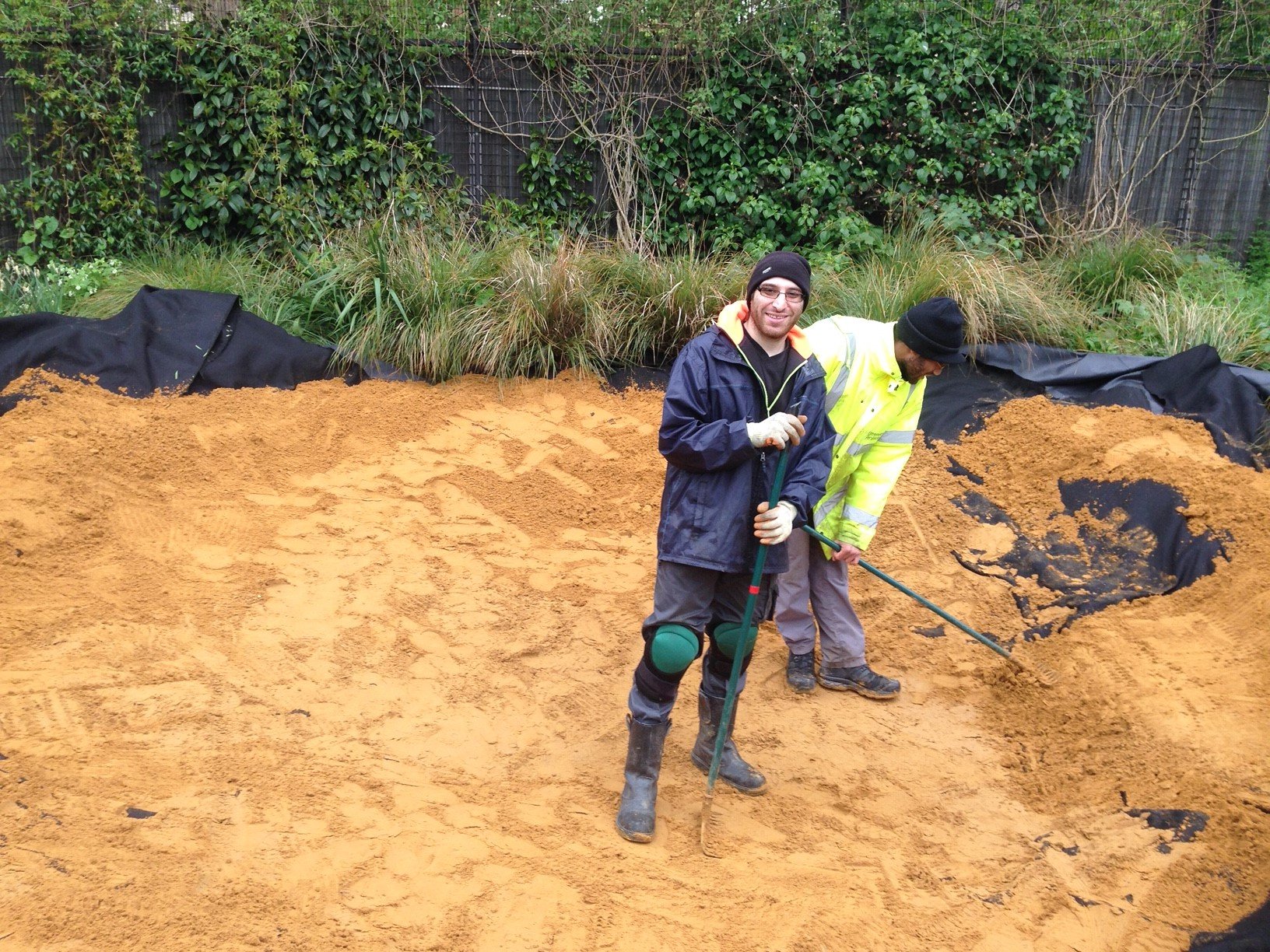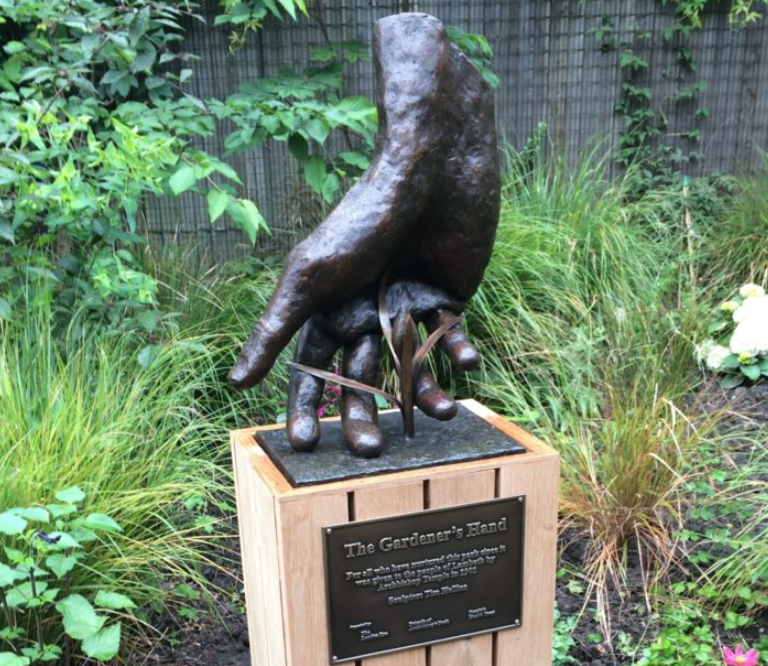Wildlife
Re-Wild London
We are working with the London Borough of Lambeth to enhance and restore the park which is a London Site of Importance for Nature Conservation (SINCs). These make up London’s wildlife network and play a key role in rewilding and recovering nature in the city.
At Archbishop’s Park, we have improved amphibian life by creating a new bog garden next to the pond by the Lambeth Palace border, planted 4 borders with wildflowers, shade-loving shrubs and bulbs, installed minibeast towers and made improvements to the fencing and security around the pond and woodland walk to protect the marginal edges for forage. Over 70 Victorian clay water pipes have been submerged behind areas of over 150m of new hedging to provide new hibernacula for amphibians and nesting areas and food for wildlife.
Why ponds?
One third of ponds in the UK are thought to have disappeared in the last fifty years and of those that remain more than 80% are thought to be in ‘poor’ or ‘very poor’ condition. This has had an enormous impact on wildlife, particularly amphibians. Frogs, toads and newts are dependent on ponds to breed; if ponds disappear, so do they.
Finally the Froglife Trust has supported us by training 20 volunteers from both our gardening club and Lambeth Palace in how to manage our ponds and support amphibians.
We also built a rockery as this gives invertebrates and amphibians shelter, especially in winter.
Art in the park
Arthur’s Oak Bower
The bower (or place of repose) was designed and hand-carved by Arthur de Mowbray.
The roof is red cedar from the Cowdrey Park Estate and the seats and supports were carved from a single oak tree from Hammerwood Park, a stately home owned in the 1970’s by rock band Led Zepplin and designed by British architect Benjamin Henry Latrobe.
Arthur chose red cedar as it is durable, pliable and light-weight. Originally English carpenters would have used the indigenous chestnut tree which originates from the USA and Canada, where Native American tribes used it for totem poles and dug-out canoes, part of Arthur’s inspiration for the design.
Lizzie Lambert
Created by Jessica Wilson, this sculpture represents human kindness.
The sculpture is situated on the former tuck shop that Lizzie ran. It was the focal point of school children many years ago.
Lizzie was said to give school children a sixpence of their birthdays (provided they then spent it at the tuckshop!) Lizzie's family still live locally and use Archbishop's Park.
Most of our projects are directly about gardening, but sometimes we are able to undertake activities which combine gardening with other topics such as art, particularly as our area is so historical. This was the case of the sculpture Lizzie Lambert where we were able to regenerate a disused area of the park by erecting a sculpture which was run as a local competition reflecting local history and where we also used the runner up sculpture “The Gardener’s Hand” in the southern end of the park. Other times we have used less conventional items such as a fallen tree to create a replacement shelter.
The Gardener’s Hand
Created by artist Tim Hollins, this bronze stands about 60 cm high and sits in one of the flowerbeds near the pond and is part of the “Woodland Walk” which runs alongside the perimeter fence with Lambeth Palace. It reflects the hard work of all the volunteers who help the gardens looking good and nestled within the hand in a crocus.
Beekeeping
We have five hives near the Lambeth Palace Road entrance which help pollinate our orchard and the many flowers and trees which make the park so beautiful throughout the year. There are a couple of bee suits, so if volunteers want to try their hand, they can work with our expert beekeeper and trainer Eugene from Bee Urban.
Around September each year, Bee Urban extracts our honey from the comb and bottles it into 8 oz jars, ready to be eaten.
Local, raw honey can help with seasonal allergies and is a natural antiseptic, but above all its delicate taste, unique to our park, is delicious!
Honey is for sale at our container in the park each Friday (just inside the Carlisle Lane entrance) or by contacting Helen on 07981 908919 who can arrange to meet you in the park. Alternatively, contact us through our website. All proceeds support our activities in the park.









